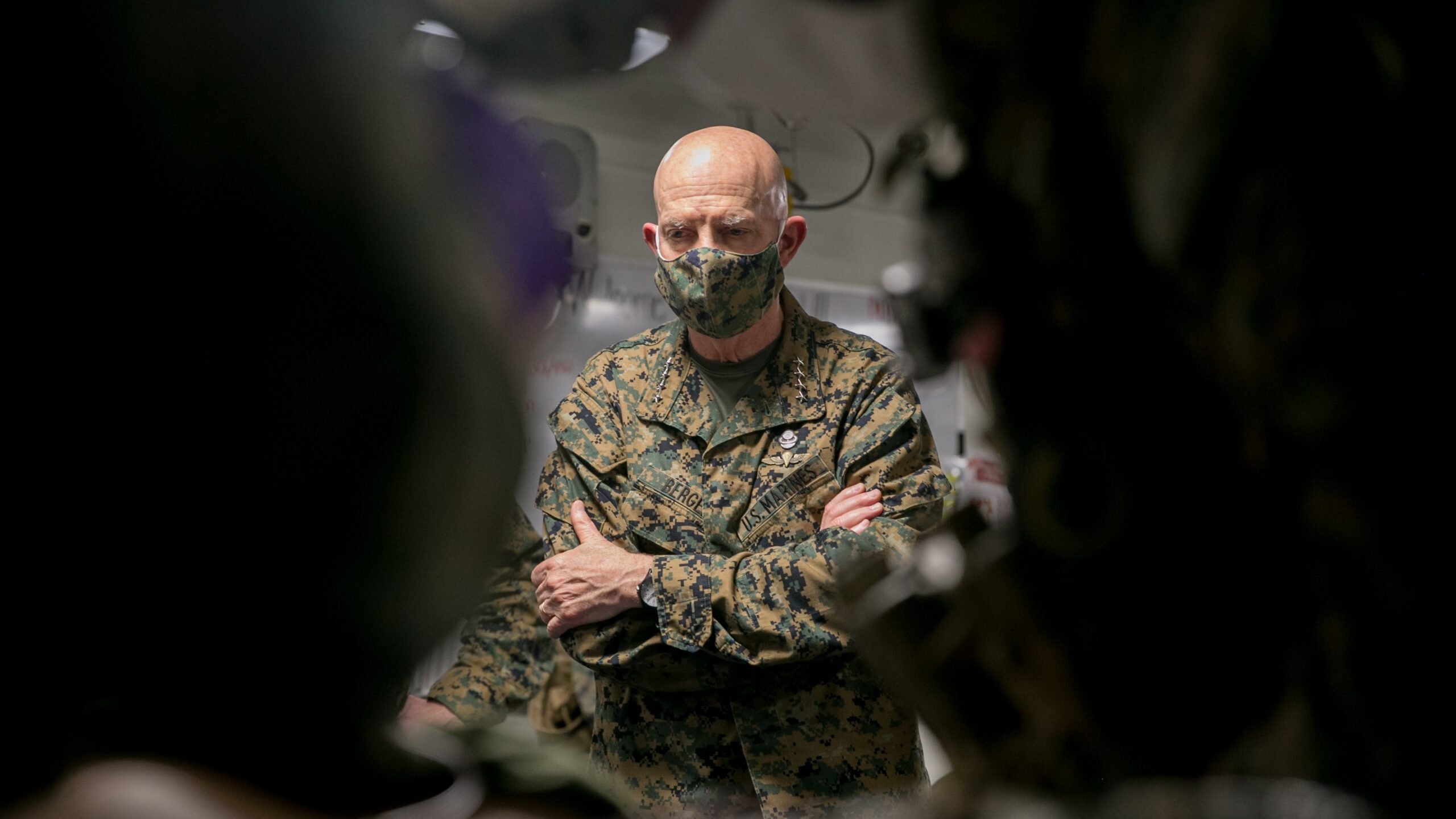JUSTIN KATZ

Marine Corps Commandant Gen. David Berger observes a simulated casualty response demonstration by U.S. Navy Hospital Corpsmen with the 15th Marine Expeditionary unit during a tour aboard the amphibious assault ship USS Makin Island (LHD 8). (U.S. Marine Corps photo by Sgt. Sarah Stegall)
WASHINGTON — The Pentagon’s structuring of regional combatant commanders may be overdue for reform, given the changing nature of how and where wars are being fought, Marine Corps commandant Gen. David Berger said Tuesday.
“My own opinion is it’s time for a look at that,” Berger said in response to questions at a Brookings Institute event. “For all the right reasons, we’ve added where we needed, but there comes a point where there’s so many combatant commanders and so many service chiefs that I wonder at what point does the secretary of defense have a span of control where… getting to a decision and getting the right perspectives on the table becomes really difficult.”
The current COCOM structure, which assigns one four-star officer to oversee activities in different regions of the world — North America, South America, the Middle East, Africa, among others — is the result of the Goldwater-Nichols Act of 1986.
That legislation streamlined the military’s chain of command by having the combatant commanders report directly to the defense secretary and, by extension, the president. The Joint Chiefs under Goldwater-Nichols took up an advisory role as well as being responsible for training and equipping their respective services.
It also created certain tensions between the Joint Chiefs and the COCOM heads over where and how to invest the Pentagon’s budget, as well as strategic priorities — and yet, a service leader calling for the COCOM structure to be reorganized is a rarity.
In his comments, the commandant argued that the current structure of the combatant commands is based solely on geography, which “made absolute sense when most of the conflicts were regional,” he added.
But “not anymore,” he said. “We have a framework that has lines on maps that don’t really correspond to where the — they create seams.”
Berger specifically referenced conflicts occurring in space and cyberspace, both of which cross the boundaries of the current COCOM structure. While there have been efforts to address those seams through the creation of US Cyber Command and US Space Command, ultimately those organizations may end up just as siloed as their geographic compatriots.
“These are now becoming — I think, a challenge when you’re viewing global threats, global problems. How do you integrate that from a global perspective?” he said.
No comments:
Post a Comment